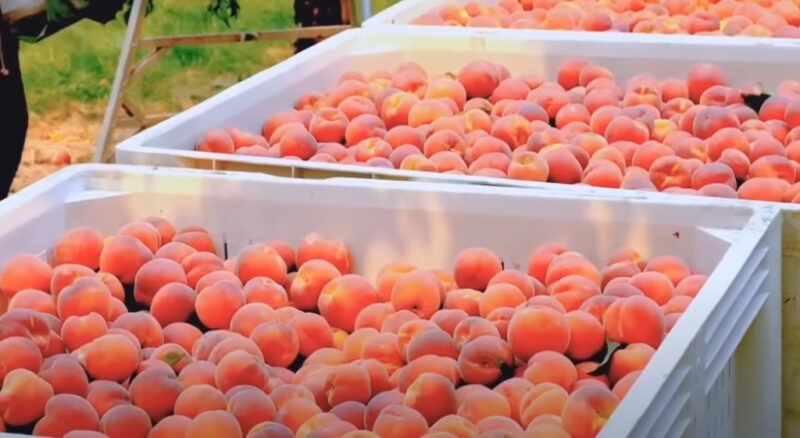When life gives you peaches, don’t just eat the juicy flesh; remember to save the peels! Peach peels are a goldmine of untapped potential, containing an abundance of fiber, vitamins, and antioxidants that can benefit our health in numerous ways. One of the most inventive and enjoyable ways to make use of these “scraps” is to make peach peel jelly.
This sustainable and delectable practice not only brings excitement to our daily meals but also aligns with the growing trend towards reducing food waste. In this article, we will guide you through the art of making peach peel jelly, and we’ll also talk about why these skins are a treasure trove of nutritional value.
Why Should We Value Peach Peels?
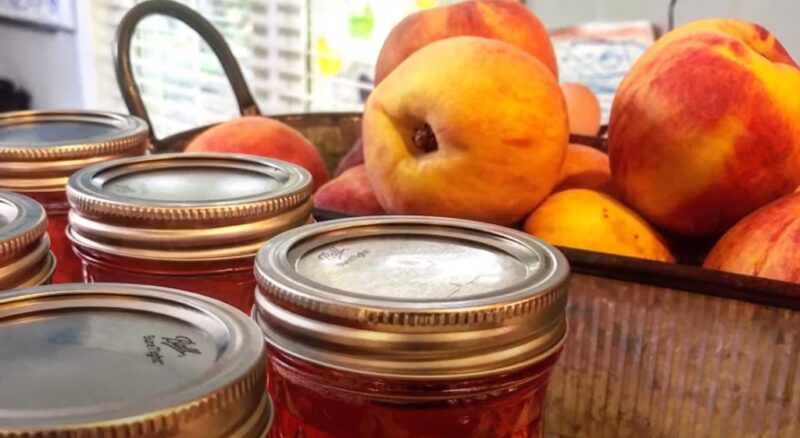
Peaches are not only delicious; their skins are packed with beneficial nutrients that often go to waste. This section will explain the nutritional value of peach peels, showcasing why they should not be discarded but used to make something wonderful like peach peel jelly.
The Nutritional Powerhouse
Peach peels are rich in dietary fiber, a crucial component for optimal digestive health. Moreover, they are loaded with vitamins A, C, and E and contain antioxidants known as anthocyanins, responsible for the peaches’ vibrant color.
- Dietary Fiber: Dietary fiber aids digestion, helps maintain a healthy weight, and lowers the risk of diabetes and heart disease.
- Vitamins: Vitamin A supports the vision and the immune system; Vitamin C aids in the formation of blood vessels, cartilage, muscle, and collagen in bones; Vitamin E acts as an antioxidant, protecting the body from damage caused by free radicals.
- Anthocyanins: These are powerful antioxidants that help reduce inflammation, boost the immune system, and prevent several chronic diseases.
Therefore, rather than discarding these nutrient-packed peels, turning them into peach peel jelly is an excellent way to incorporate these healthful compounds into your diet.
Peach Peels and Sustainability
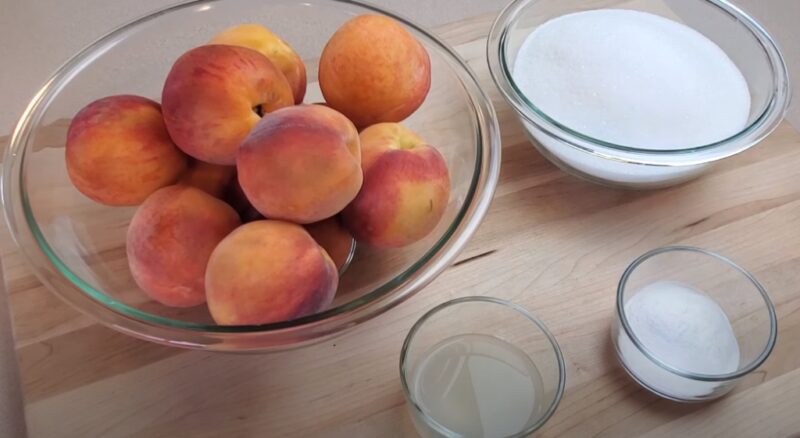
Beyond the health benefits, using every part of the fruit — including the peels — aligns with a more sustainable lifestyle. In an era where food waste is a significant issue, it’s crucial to rethink our consumption habits and minimize waste.
Around a third of all food produced globally is wasted. By using peach peels, a part of the fruit that often ends up in the bin, you are contributing to a larger cause of reducing food waste. Plus, by repurposing these “scraps” into jelly, you’re adding a tasty treat to your pantry!
The Art of Making Peach Peel Jelly
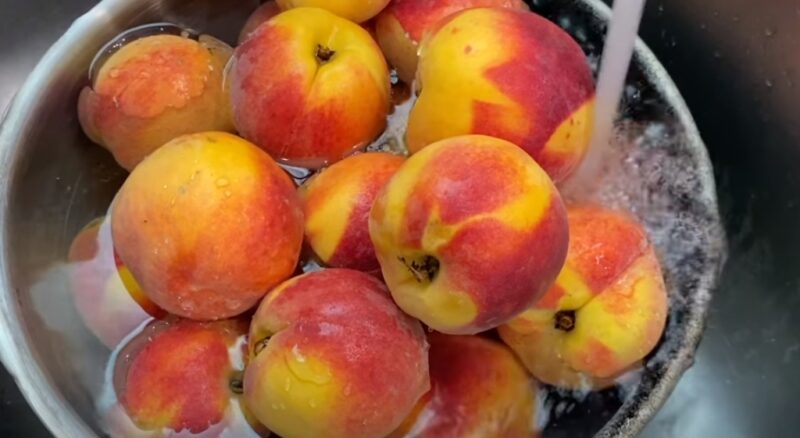
Now that we’ve understood the importance of peach peels let’s dive into the process of making peach peel jelly. The transformation of the humble peach peel into a scrumptious jelly is nothing short of magic. Don’t worry if you’re a novice in the kitchen; this section will guide you step by step.
Essential Ingredients and Tools
For your peach peel jelly, you’ll need the following ingredients:
- Peels and pits from 12 medium-sized peaches
- 4 cups of water
- 3 cups of sugar
- 1 package (1.75 ounces) of fruit pectin
You’ll also need these tools:
- A large pot
- A jelly bag or cheesecloth
- A canning jar with lid
- A candy thermometer
Note: The quantity of sugar and pectin can be adjusted based on the natural sweetness of the peaches and your preferred jelly texture.
Step by Step Process
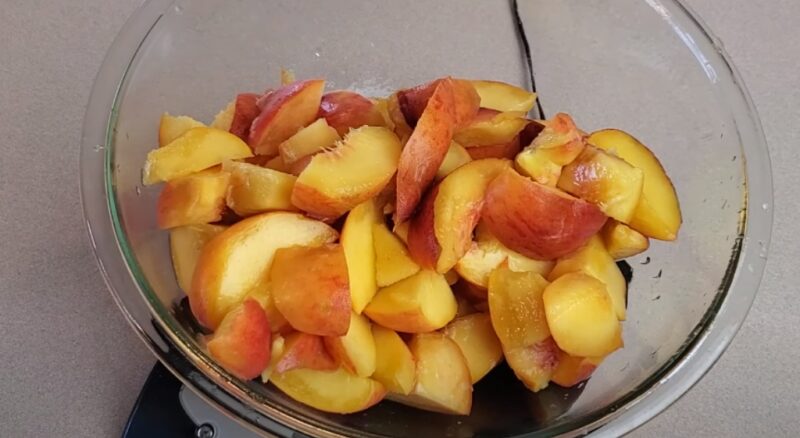
- Simmer the Peels: Place the peels and pits in your large pot and cover them with water. Bring the mix to a boil, then reduce the heat and let it simmer for about 30 minutes.
- Strain the Mixture: Strain the mixture through a jelly bag or cheesecloth into a large bowl, leaving it to drip for around 3-4 hours or overnight.
- Combine and Boil: Combine the strained juice (should be about 3 cups) with sugar and pectin in your pot. Stir until the sugar dissolves, then bring the mixture to a hard boil (a boil that doesn’t stop bubbling when stirred) on high heat.
- Check the Temperature: Boil until the mix reaches a temperature of 220°F (105°C) on the candy thermometer. This is the “gel point,” where your jelly will set.
- Jar and Store: Pour the hot jelly into the canning jar, leaving a quarter-inch space at the top. Seal the jar while the jelly is still hot. Once cooled, the jelly is ready to enjoy!
The Versatility
Peach peel jelly is not just a standalone delight; it’s also incredibly versatile. This section will offer you some delicious ideas to use your homemade peach peel jelly.
Perfect Pairings
Peach peel jelly’s unique taste pairs well with a variety of dishes. It brings a sweet, slightly tangy twist to whatever it graces. Some suggestions include:
- Breakfast: Spread it on toast, scones, or muffins. Swirl it into your morning yogurt or oatmeal.
- Lunch/Dinner: It can work as a glaze for grilled chicken or pork. It also pairs beautifully with cheeses in a sandwich.
- Dessert: Dollop it on ice cream or use it as a filling for crepes and pastries.
Gift it Forward
Since peach peel jelly is relatively uncommon and has a homemade touch, it makes an excellent gift. Tie a ribbon around a jar of your homemade peach peel jelly, attach a personalized tag, and voila! You have a thoughtful, sustainable gift that is sure to impress.
How to Modify Peach Peel Jelly Recipes
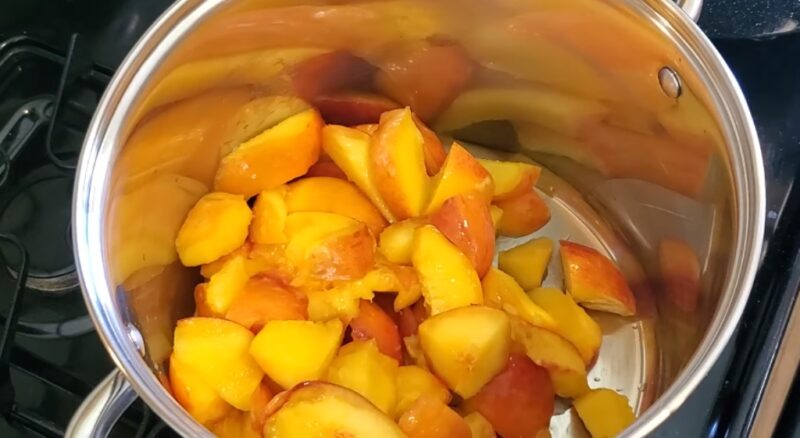
Peach peel jelly is versatile, and the recipe can be tailored to fit various dietary needs and preferences. Whether you’re looking to cut down on sugar, experiment with flavors, or add a touch of luxury, there are several ways you can modify the standard recipe.
Cutting Down on Sugar
If you’re conscious about sugar intake, you might be wondering how to reduce the sugar content in the peach peel jelly recipe. A simple solution is to use a low-sugar pectin, which allows you to decrease the amount of sugar without affecting the jelly’s texture.
- Low-Sugar Pectin: It is specifically designed to gel with less sugar, making it ideal for those on a low-sugar or sugar-free diet.
- Alternative Sweeteners: You could also consider using alternative sweeteners such as honey, agave nectar, or stevia. However, remember that these sweeteners have different sweetness levels and may affect the final taste and texture.
Please note that changes in the recipe might alter the preservation process, so it’s crucial to consume low-sugar variations faster and store them properly.
Experimenting with Flavors
For those with an adventurous palate, there are countless ways to infuse additional flavors into your peach peel jelly. Here are a few ideas:
- Spices: Add a cinnamon stick, a few cloves, or a piece of star anise while simmering the peels to introduce warm, spiced notes.
- Herbs: Herbs such as rosemary or basil can lend a unique, savory twist to your jelly.
- Alcohol: A splash of quality bourbon or rum can add a luxurious depth of flavor.
Remember, the key to successful flavor experimentation is balance. It’s essential not to overwhelm the delicate peach flavor but rather enhance it.
Adding a Touch of Luxury: Peach and Gold Jelly
For a truly extravagant twist on the traditional peach peel jelly, consider adding edible gold leaf. The gold leaf doesn’t affect the taste but adds a beautiful visual element, making the jelly sparkle when the light hits it. This could be an exciting variation to make for a special occasion or as a luxury gift.
The Bigger Picture: Food Waste and Sustainability
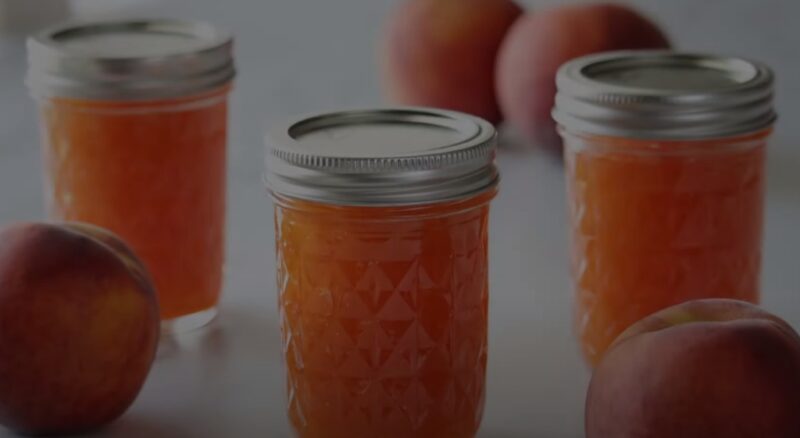
The journey of making peach peel jelly goes beyond a simple recipe; it’s a small step towards a larger global concern: food waste and sustainability.
The Impact of Food Waste
Globally, food waste is a major issue, with implications for both the environment and the economy. Wasting food means wasting the resources (water, energy, and land) used to produce that food.
- Environmental Impact: When food waste ends up in landfills, it decomposes without oxygen, producing methane, a potent greenhouse gas that contributes to climate change.
- Economic Loss: It’s estimated that the global cost of food waste is around $1 trillion annually.
By using peach peels to make jelly, you’re contributing to the reduction of food waste and promoting a more sustainable food system.
Sustainability at Home
Transforming peach peels into jelly is a small step that can make a big difference. It is a brilliant example of a broader concept called “root-to-stem” or “nose-to-tail” cooking, where the goal is to use every part of the plant or animal to minimize waste.
- Composting: Any food scraps that can’t be used (like the peach pits after extracting as much as possible) can be composted. Composting returns valuable nutrients to the soil and reduces the need for chemical fertilizers.
- Education: Share your peach peel jelly-making experience with others. Education is a key step towards a more sustainable food system.
FAQs
How is Peach Peel Jelly made?
To make it, you place your peels and pits in a stock pot and just barely cover them with water. You then bring this to a boil and let it simmer for about 30 minutes. After that, you strain the juice from the pot and discard the solids.
What are the main ingredients for Peach Peel Jelly?
The main ingredients are the peels and pits from peaches, water, and sugar. Some recipes may also include pectin and other flavorings like cinnamon.
How much water do I need to cover the peels and pits?
You need just enough water to barely cover the peels and pits in the pot. The exact amount can vary depending on the quantity of your peels and pits.
Can I add other flavors to my Peach Peel Jelly?
Yes, you can add other flavors. Some recipes suggest adding cinnamon sticks during the simmering process for a spiced flavor.
Do I need to add pectin to my Peach Peel Jelly?
Some recipes call for the addition of pectin, which helps the jelly set. However, peaches naturally contain pectin, especially in the peels and pits, so it may not be necessary, depending on the recipe.
Final Words
The practice of making peach peel jelly is a small but significant act. It not only provides a delightful treat but also encourages a mindful, sustainable lifestyle. Remember, the key to a sustainable future lies in our everyday choices. So, save those scraps and enjoy the art of creating something delicious and sustainable!
–
